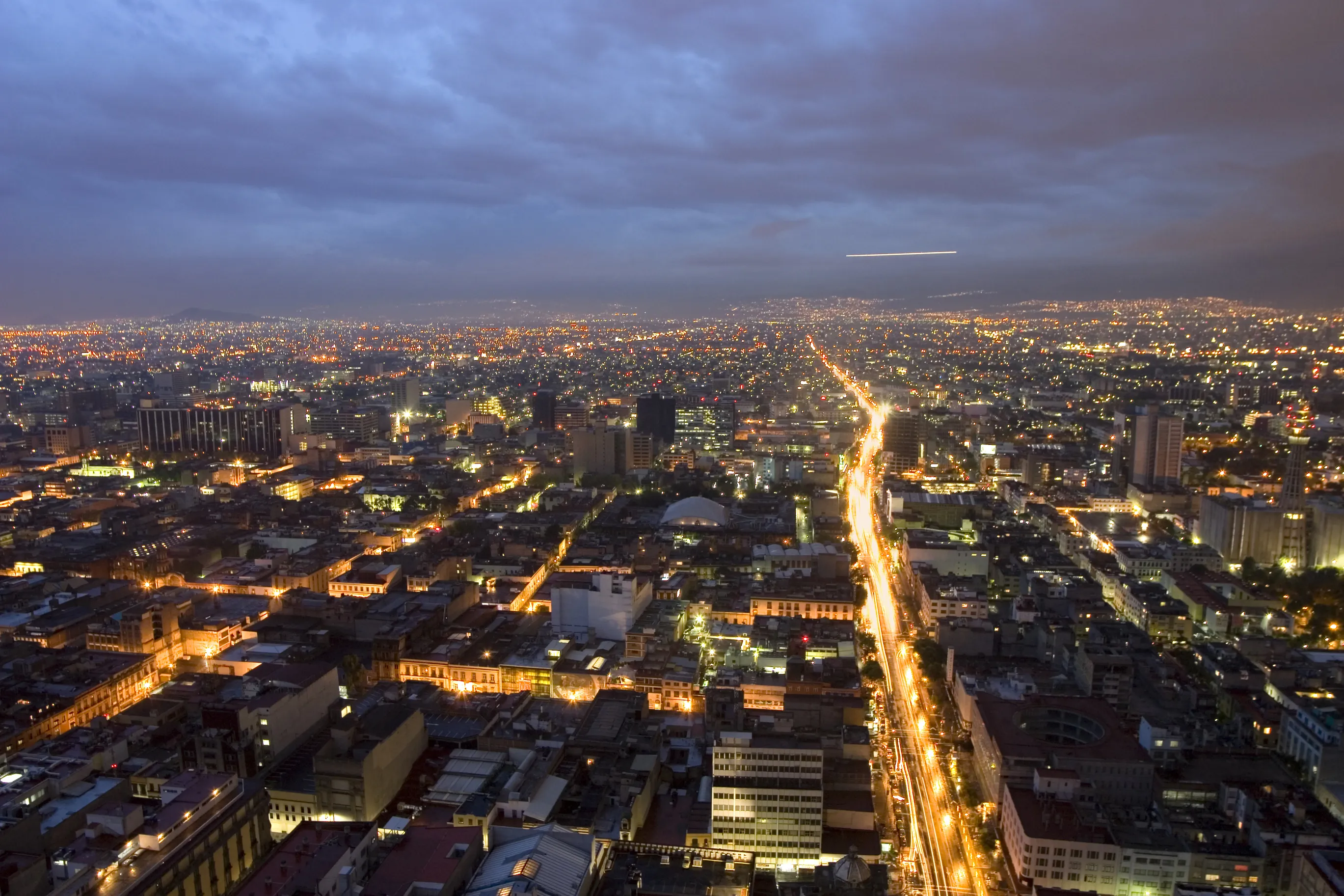A US construction sector group wants warning signs to be posted on bridges designated “structurally deficient" and in need of repair by state engineers.
More than 61,000 structurally deficient bridges remain in need of significant repair, according to the American Road & Transportation Builders Association (ARTBA), which analysed the US Department of Transport’s National Bridge Inventory database.
However, by the end of 2014 there were more than 2,000 fewer structurally deficient structures than in 20
April 10, 2015
Read time: 4 mins
A US construction sector group wants warning signs to be posted on bridges designated “structurally deficient" and in need of repair by state engineers.
More than 61,000 structurally deficient bridges remain in need of significant repair, according to the920 American Road & Transportation Builders Association (ARTBA), which analysed the US Department of Transport’s National Bridge Inventory database.
However, by the end of 2014 there were more than 2,000 fewer structurally deficient structures than in 2013. Even so, situation is not on the way to being solved even in the long-term, claimed ARTBA, an independent construction private sector umbrella group. It was established in 1902 in Washington D.C. to monitor and advise governments on infrastructure spending.
ARTBA’s chief economist Alison Premo Black said the data shows that cars, trucks and school buses cross the nation’s 61,064 structurally compromised bridges 215 million times every day. The most heavily travelled are on Interstate roads which carry most truck and passenger vehicle traffic.
While structurally deficient bridges may not be imminently unsafe, ARTBA said that signs should be posted so the public understands they have structural deficiencies that need repair.
According to the Department of Transport for the state of Maryland, a structurally deficient rating is “an early warning sign for engineers to use to prioritise funding and to initiate rehabilitation or to begin the process to replace the bridge”.
The rating applies to three main elements of a bridge: 1) the deck (riding surface); 2) the superstructure (main supporting element of the deck, usually beams, girders, trusses, etc.); and 3) the substructure (supports to hold up the superstructure and deck, usually abutments and piers).
Elements are rated on a scale from zero (closed to traffic) to nine (relatively new). “If any of the three elements is rated as a four or less, the bridge is categorized as structurally deficient by federal standards. This does not mean that the bridge is unsafe. If a bridge becomes unsafe, it will be closed,” noted the website.
ARTBA’s analysis of bridge data supplied by states to the U.S. DOT also found:
- The 250 most heavily crossed structurally deficient bridges are on urban interstate highways, particularly in California. Nearly 87% of these bridges were built before 1970
- Rankings show that Pennsylvania has 5,050 structurally deficient bridges followed by Iowa (5,022), Oklahoma (4,216), Missouri (3,310), Nebraska (2,654), California (2,501), Kansas (2,416), Mississippi (2,275), Illinois (2,216) and North Carolina (2,199). States with the least number includet District of Columbia (14), Nevada (34), Delaware (48), Hawaii (61) and Utah (102), which has the least number of all states.
- At least 15% of the bridges in eight states - Rhode Island (23%), Pennsylvania (22%), Iowa (21%), South Dakota (20%), Oklahoma (18%), Nebraska (17%), North Dakota (16%) and Maine (15%)—fall in the structurally deficient category.
The bridge problem could get a lot worse soon, Black warned. Many of the most heavily travelled bridges are nearly 50 years old.
The federal Highway Trust Fund (HTF) is the source of 52% of state government capital investment in highways and bridges. But the HTF suffered five revenue shortfalls between 2008 and 2014, and has been bailed out with nearly $65 billion from the federal government’s General Fund just to preserve existing investment levels.
The latest extension of federal highway and transit funding through the HTF expires May 31, unless there is intervention by Congress. Nearly a dozen states have cancelled or delayed road and bridge projects because of uncertainty over the trust fund situation and ARTBA expects that number to increase as the May 31 deadline nears.
“State and local governments are doing the best they can to address these significant challenges, given limited resources,” said Black.
Bridge investments have been growing in recent years, but it has come at the expense of highway and pavement spending, which has dropped over 20% in the past five years. There is a backlog of over US$115 billion in bridge work and $755 billion in highway projects, according to U.S. DOT data.
Information concerning rankings and location lists of the 250 most heavily travelled structurally deficient bridges as well as the top five most heavily travelled bridges in each state is available at the ARTBA website.
More than 61,000 structurally deficient bridges remain in need of significant repair, according to the
However, by the end of 2014 there were more than 2,000 fewer structurally deficient structures than in 2013. Even so, situation is not on the way to being solved even in the long-term, claimed ARTBA, an independent construction private sector umbrella group. It was established in 1902 in Washington D.C. to monitor and advise governments on infrastructure spending.
ARTBA’s chief economist Alison Premo Black said the data shows that cars, trucks and school buses cross the nation’s 61,064 structurally compromised bridges 215 million times every day. The most heavily travelled are on Interstate roads which carry most truck and passenger vehicle traffic.
While structurally deficient bridges may not be imminently unsafe, ARTBA said that signs should be posted so the public understands they have structural deficiencies that need repair.
According to the Department of Transport for the state of Maryland, a structurally deficient rating is “an early warning sign for engineers to use to prioritise funding and to initiate rehabilitation or to begin the process to replace the bridge”.
The rating applies to three main elements of a bridge: 1) the deck (riding surface); 2) the superstructure (main supporting element of the deck, usually beams, girders, trusses, etc.); and 3) the substructure (supports to hold up the superstructure and deck, usually abutments and piers).
Elements are rated on a scale from zero (closed to traffic) to nine (relatively new). “If any of the three elements is rated as a four or less, the bridge is categorized as structurally deficient by federal standards. This does not mean that the bridge is unsafe. If a bridge becomes unsafe, it will be closed,” noted the website.
ARTBA’s analysis of bridge data supplied by states to the U.S. DOT also found:
- The 250 most heavily crossed structurally deficient bridges are on urban interstate highways, particularly in California. Nearly 87% of these bridges were built before 1970
- Rankings show that Pennsylvania has 5,050 structurally deficient bridges followed by Iowa (5,022), Oklahoma (4,216), Missouri (3,310), Nebraska (2,654), California (2,501), Kansas (2,416), Mississippi (2,275), Illinois (2,216) and North Carolina (2,199). States with the least number includet District of Columbia (14), Nevada (34), Delaware (48), Hawaii (61) and Utah (102), which has the least number of all states.
- At least 15% of the bridges in eight states - Rhode Island (23%), Pennsylvania (22%), Iowa (21%), South Dakota (20%), Oklahoma (18%), Nebraska (17%), North Dakota (16%) and Maine (15%)—fall in the structurally deficient category.
The bridge problem could get a lot worse soon, Black warned. Many of the most heavily travelled bridges are nearly 50 years old.
The federal Highway Trust Fund (HTF) is the source of 52% of state government capital investment in highways and bridges. But the HTF suffered five revenue shortfalls between 2008 and 2014, and has been bailed out with nearly $65 billion from the federal government’s General Fund just to preserve existing investment levels.
The latest extension of federal highway and transit funding through the HTF expires May 31, unless there is intervention by Congress. Nearly a dozen states have cancelled or delayed road and bridge projects because of uncertainty over the trust fund situation and ARTBA expects that number to increase as the May 31 deadline nears.
“State and local governments are doing the best they can to address these significant challenges, given limited resources,” said Black.
Bridge investments have been growing in recent years, but it has come at the expense of highway and pavement spending, which has dropped over 20% in the past five years. There is a backlog of over US$115 billion in bridge work and $755 billion in highway projects, according to U.S. DOT data.
Information concerning rankings and location lists of the 250 most heavily travelled structurally deficient bridges as well as the top five most heavily travelled bridges in each state is available at the ARTBA website.







